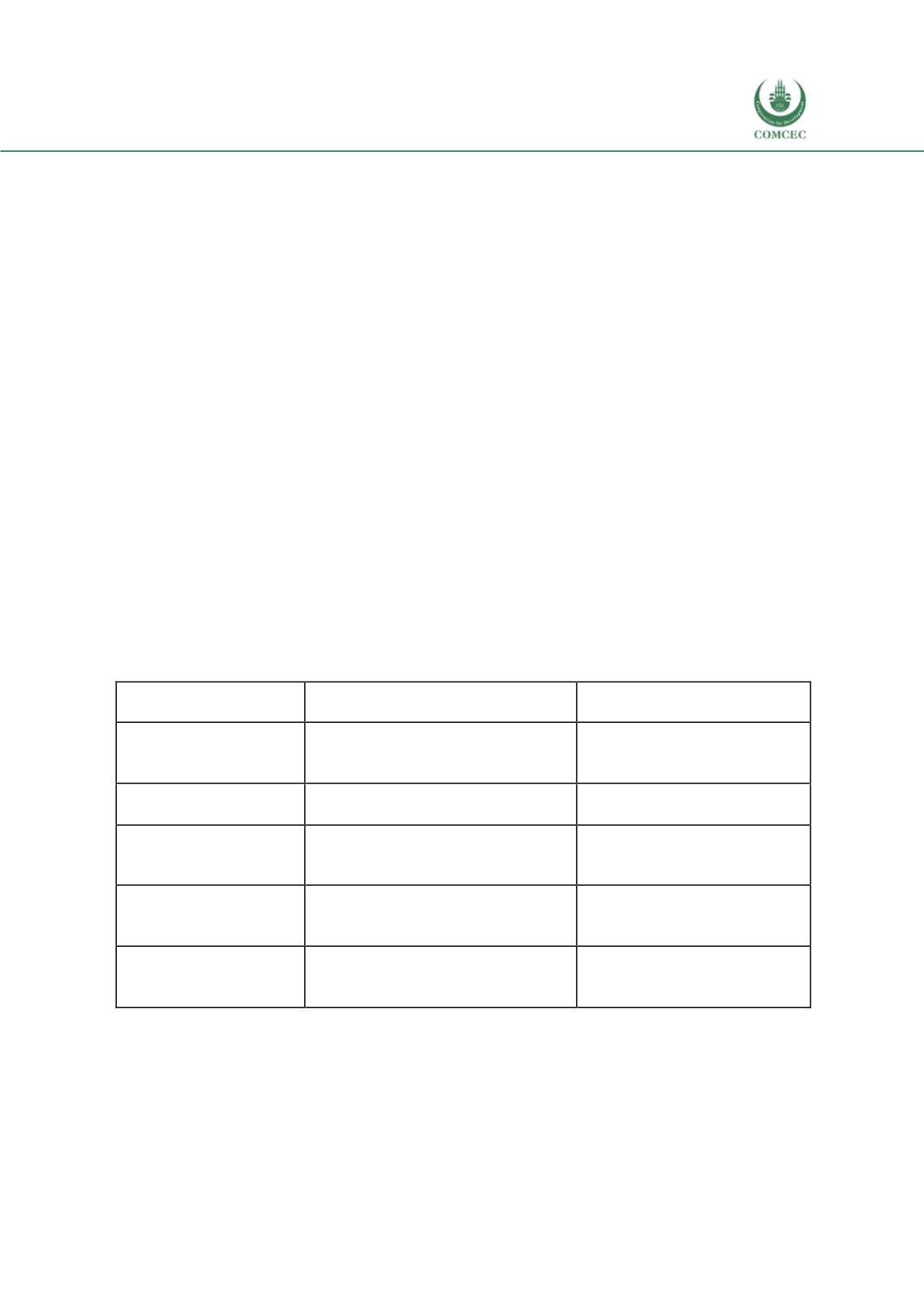

Increasing the Resilience of the Food Systems
In Islamic States in Face of Future Food Crises
145
Country-level gap assessments could be led by the majority of OIC countries but
supported by the OIC, which could lead to a food security “rating” that is continually
updated
Gap assessments will provide a more detailed illustration of the structural weaknesses in the
Member countries that are most vulnerable to food crises.
Existing studies conducted by SESRIC and COMCEC have been extremely valuable at the OIC
level. They have highlighted gaps in food systems across the OIC and provided much needed
data on various food pillars. In combination, these studies are incredibly useful for promoting
discussions, formulating areas of cooperation, and creating awareness.
As OIC studies becomemore sophisticated and more oriented towards meaningful outcomes in
terms of food security, in-depth studies are needed at a country level. This allows for a more
detailed understanding of the specific gaps and required actions in a given country’s food
systems. The countries that have been deemedmost at risk in this study, classified as group B2
and followed by Group B1, could be the focus of these in-depth studies.
These studies naturally build on country food security and agriculture profiles prepared by the
UN FAO, CIA world factbook, and the EIU. However, they will also go much deeper,
supplemented by extensive field visits and with several important attributes, building on
frameworks developed in this and previous reports prepared by COMCEC and SESRIC. Such
studies could be partly funded by the countries subject to the studies, in addition to SESRIC and
COMCEC and could be conducted in partnership with UNFAO.
Table 75: Suggested Topic Areas for In-Depth Country Studies
Suggested Topic
Areas
Specific Learnings
Potential Outcomes
Pre-harvest disease
management
The prevalence of aflatoxin
Government funding and
incentives to eradicate
aflatoxin
Safety net programs
Gaps and inefficiencies in current
programs
Newprograms; additional
OIC-led, Zakat-based funding
Stakeholder
perspectives
Current gaps in government
apparatus
Newgovernment functions;
new partnershipswith
private sector organizations
Government functions
Level of clarity and harmony
between various government
departments
Distinct areas of functioning
and efficient operations
Talent retention and
development
The level of existing training for
farmers and future agricultural
talent
New training programs and
university grants
Source: DinarStandard Analysis
In addition to the in-depth studies, food system stability ratings may be prepared and revised
on an annual basis, developed in conjunction with the Economist Intelligence Unit, but with in -
depth assessments.
















